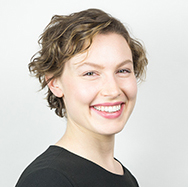A conversation with Earl Shellner, Patient Advocate and Advisory Council member
The National Partnership’s Choosing Health Equity resources are designed to support health care researchers, decisionmakers, and advocates in recognizing the numerous decision points that exist in the cycle of generating and applying evidence to improve health for everyone – with an emphasis on people and communities marginalized by systems of oppression.
The resources were developed and refined based on the feedback of an Advisory Council composed of patients, caregivers, and consumer advocates.
Dani Gillespie interviewed Advisory Council member and Patient Advocate Earl Shellner about why he thinks achieving health equity is more important than ever.
DANI: Tell me about your experience with the health care system.
EARL: I have been working as an advisor in health care for over five years now, but this is not where I imagined I would be. Life has a way of throwing curveballs at you and mine came in January 2013 when I was 37 and told I had colorectal cancer. Now for me I always knew cancer was a possibility. I was diagnosed with ulcerative colitis at the age of 13 but trust me, knowing it could happen, does not in any way prepare you for the shock of it actually happening. Thankfully, I am now cancer free after having organs removed, my digestive tract redone, chemotherapy, radiation, both hips replaced, multiple back surgeries, and a neck fusion. The past eight years have been an adventure to say the least. My journey through the American healthcare system showed me there are many changes that need to be made.
DANI: What has the pandemic been like for you?
EARL: Well, 2020 and COVID-19 came along and exposed a reality that I, and many Americans, did not fully know existed. Now I know many of us wish we could treat 2020 like Voldemort from Harry Potter and see it as “The year that shall not be named” and hope it goes away or didn’t exist at all, but unfortunately things don’t work that way. COVID-19 not only exposed the vulnerabilities of our healthcare system, it also really shined a light on how different our healthcare experiences are based on race. As an African American man, it really hurt to see that the people who looked like me were three times more likely to die from this horrible virus. Time and time again I saw statistics about infection and mortality rates on the news, and pictures of the impact COVID-19 had on communities of color. Those same news programs said we should do studies on why these inequities exist.
DANI: The COVID-19 vaccine distribution process has been riddled with racial inequities. How do you think the Choosing Health Equity resources could inform and improve vaccine rollout efforts?
EARL: People working in the health care system cannot continue to engage in business as usual and expect different results. The Choosing Health Equity resources are meant to change “normal” processes by asking health care stakeholders specific questions about how their decisions affect health equity. For example, whether vaccine efforts/programs address barriers facing minority communities and the differences in community resources that could affect the program’s effectiveness.
These questions are crucial to the vaccine rollout. We know that African American and other minority communities are receiving lower levels of vaccines compared to white communities. Barriers to vaccine distribution in African American communities include lack of broadband access to schedule a vaccination.
The community’s distrust in the health care system has also affected people’s perceptions of the vaccine. Gaining that trust will need to be a key focus of the medical community in order to achieve our goals of health equity.
Thankfully, I am fully vaccinated and have encouraged all my family members, friends, and even those at my barbershop, to go out and do the same. Unfortunately, my success rate is nowhere near as high as I would like.
DANI: What do you hope this tool changes in the health care system?
EARL: The good news is that I am participating in important efforts like this project. I can do so because organizations like the National Partnership for Women & Families, PCORI, and many others realize more than ever the issue of health inequality in our country. The most important thing is they are coming up with tools and ideas like the Choosing Health Equity resources to address this issue. This is in no way going to be a quick and easy fix, but projects like this do give me hope.
It reminds me of one of my favorite cartoons growing up in the 80’s: G.I. Joe. At the end of every episode they would have some sort of a PSA about bullying, listening to your parents, or something to that nature. The little kid would always say something like, “Gee, now I know.” The G.I. Joe character would always finish with “knowing is half the battle.” Well now at least we know about some of the issues surrounding healthcare inequality, it is up to all of us to win the battle…and choose health equity.


